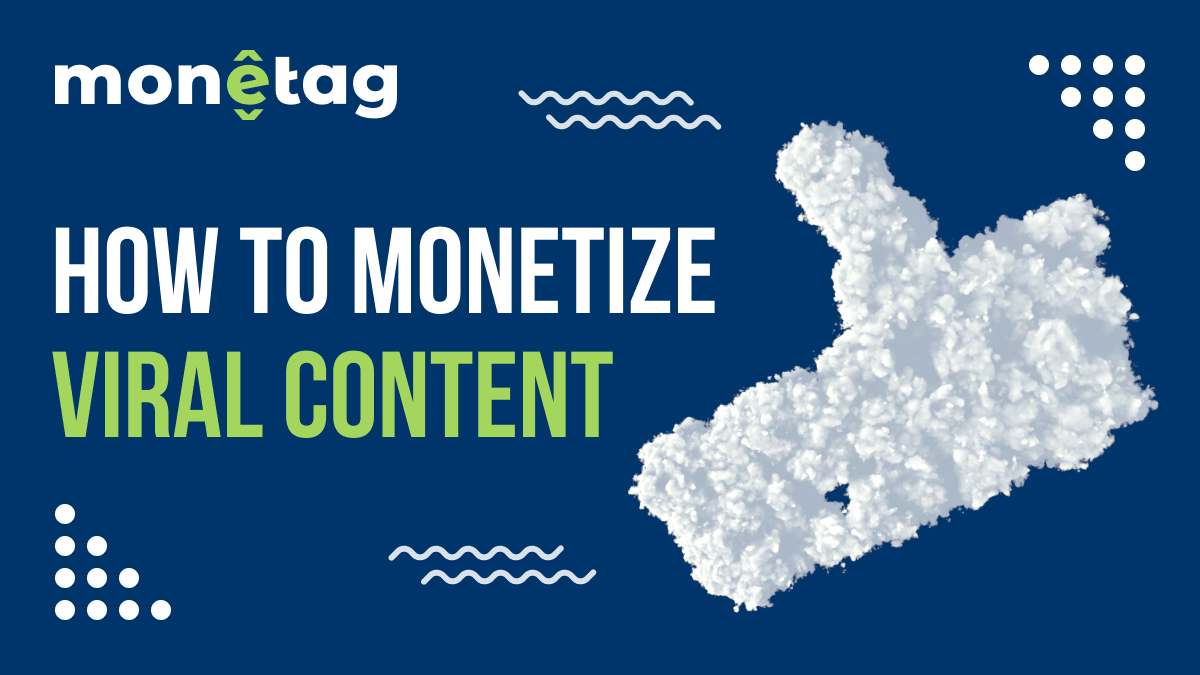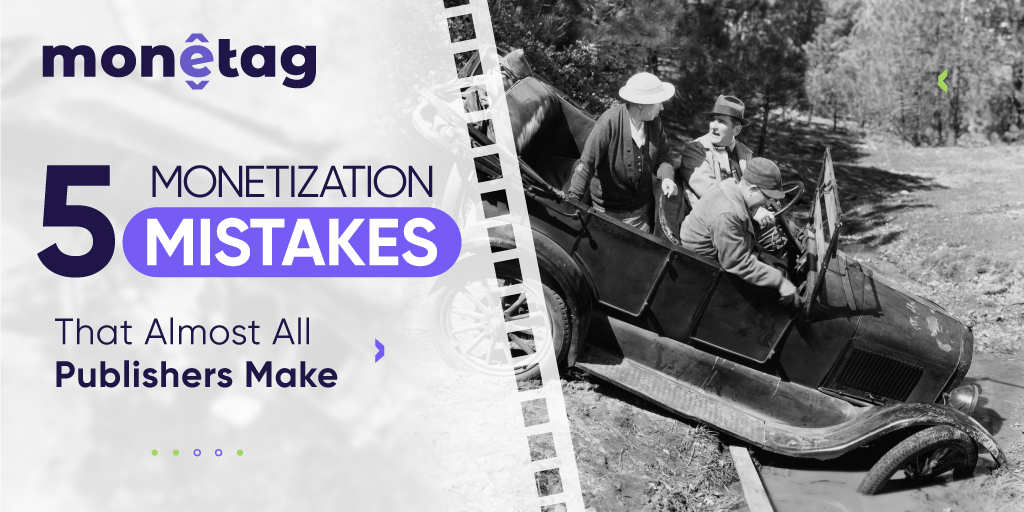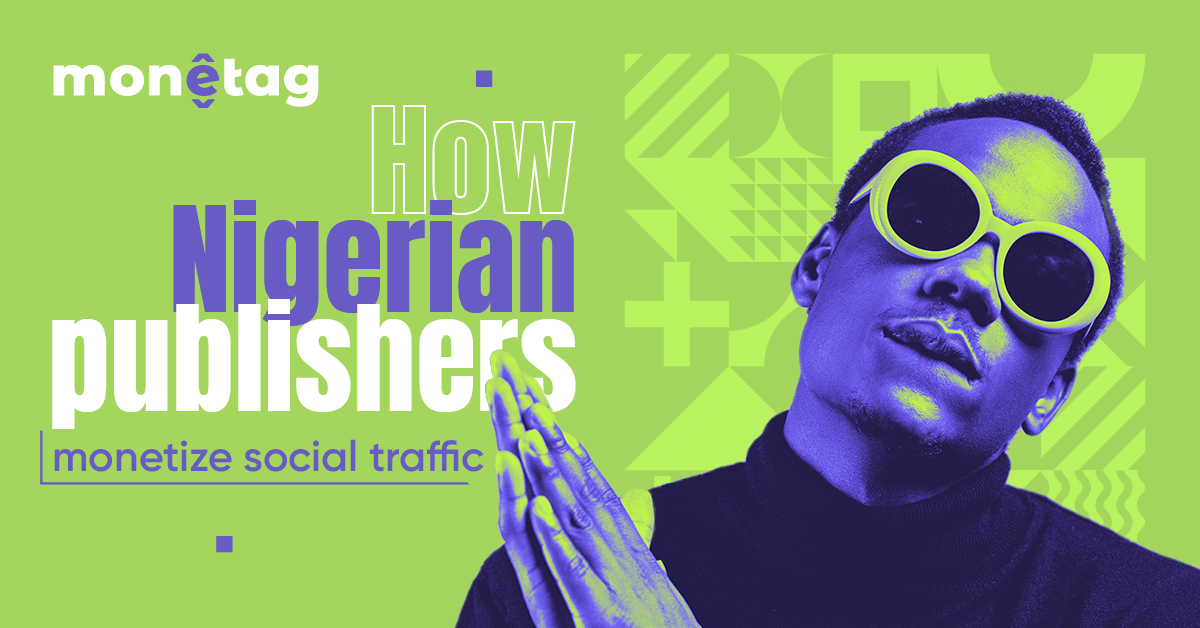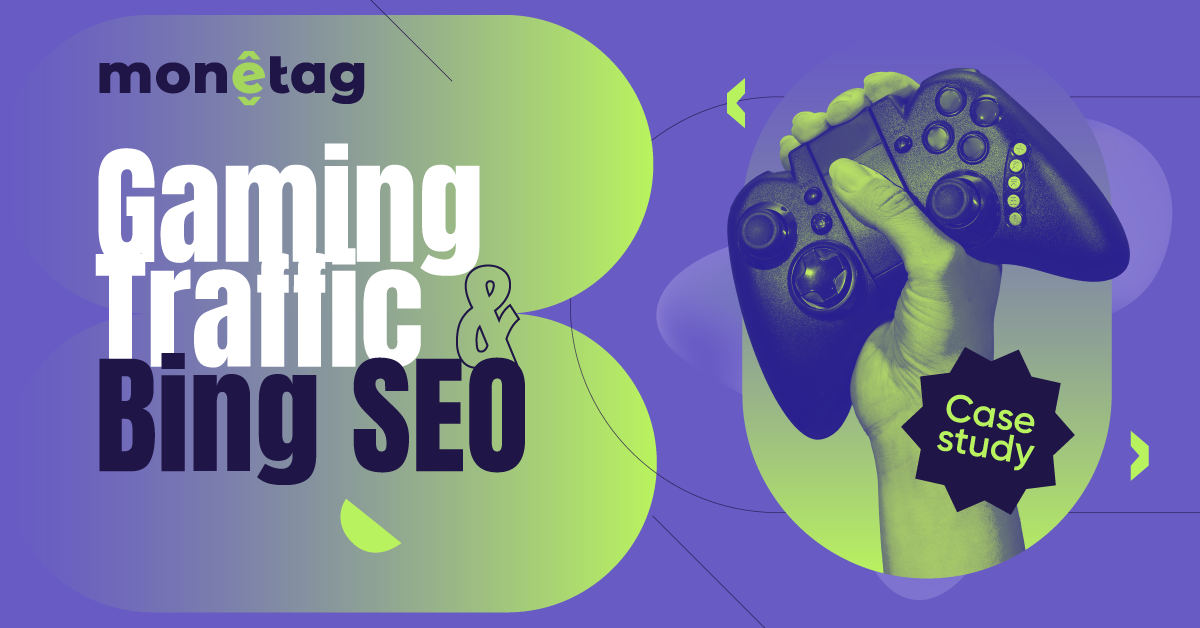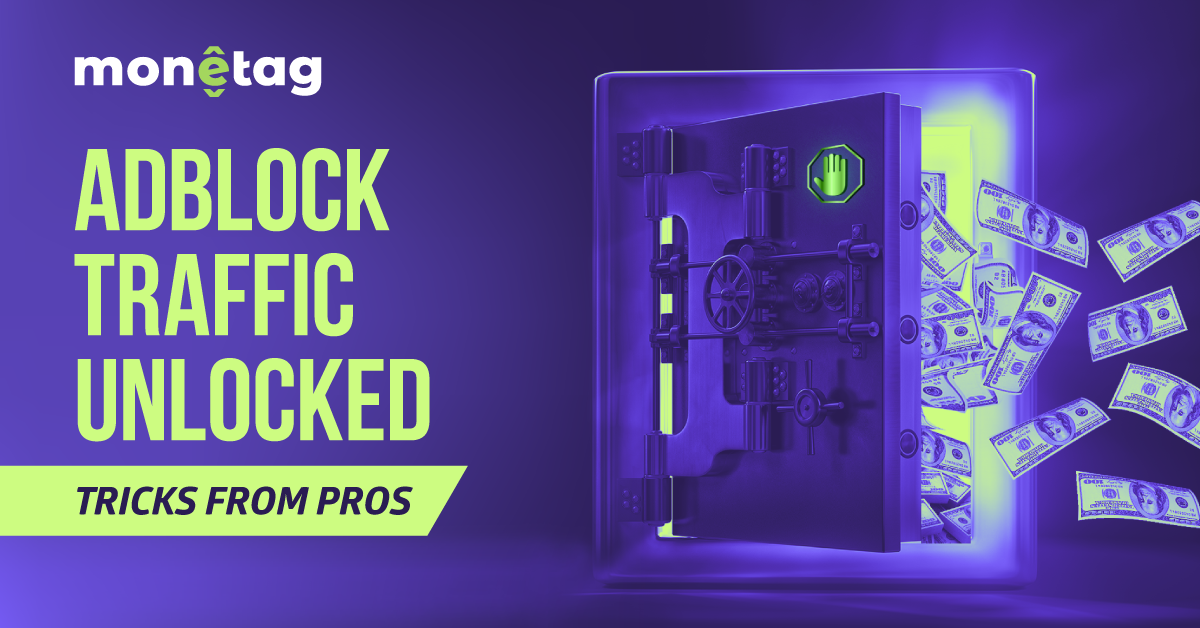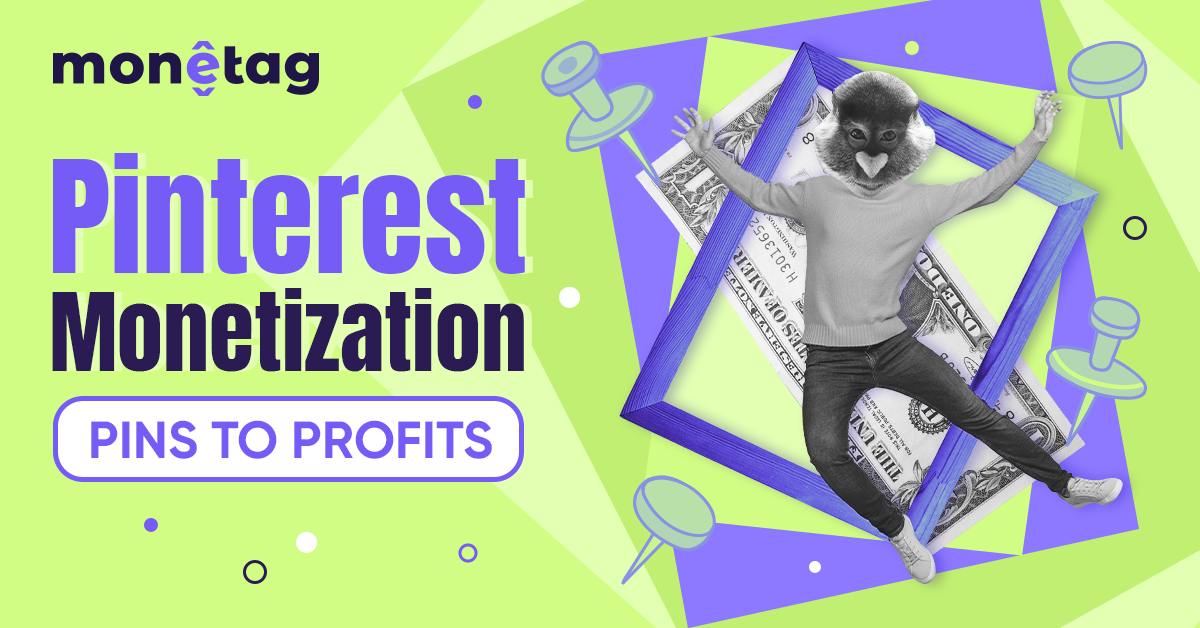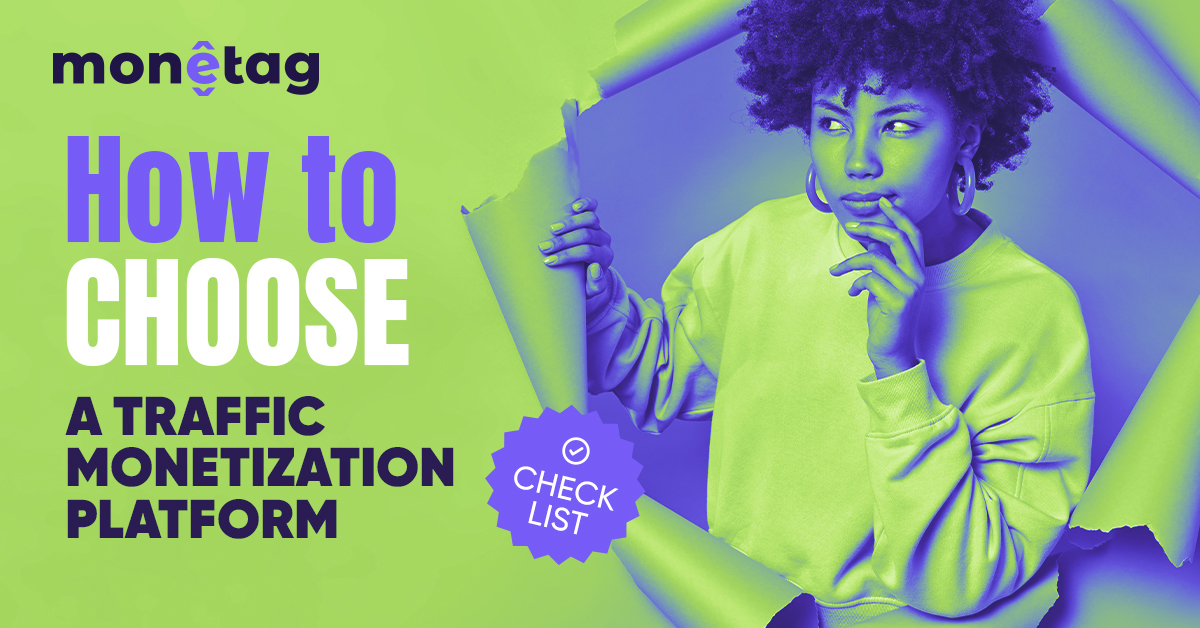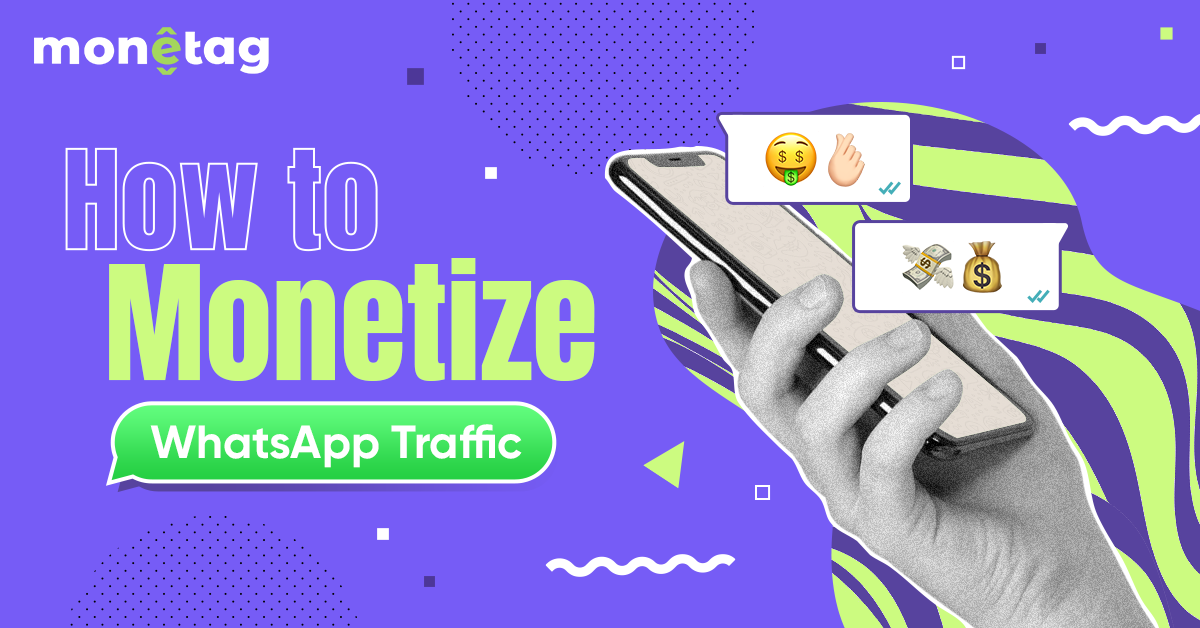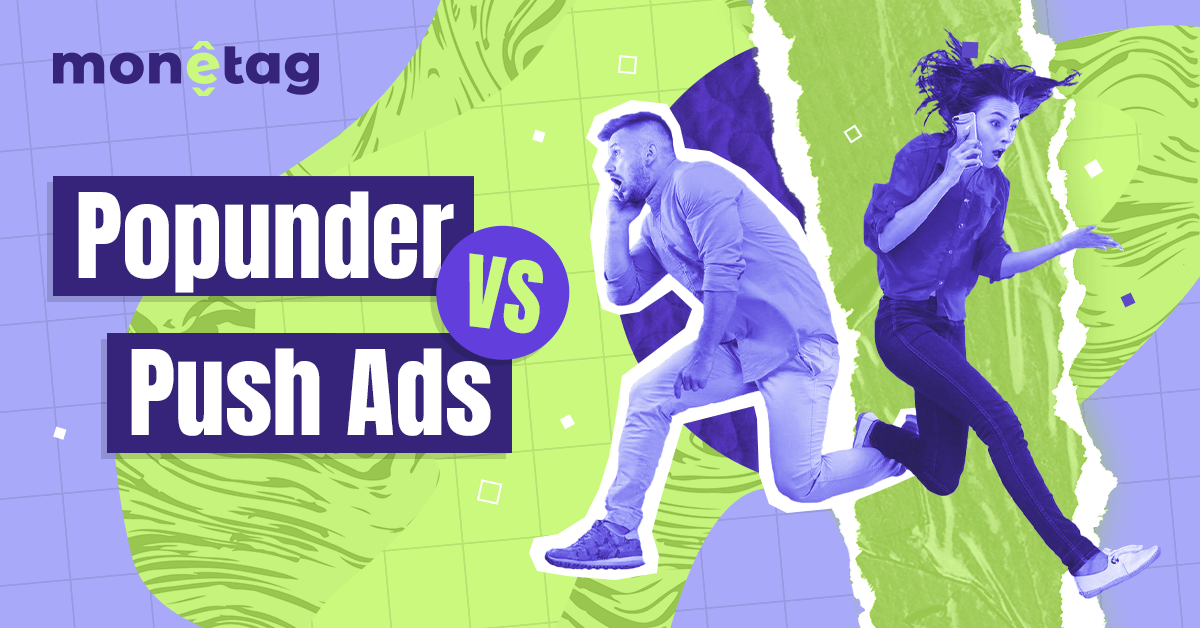Ask Monetag: Why is My CPM so Low?
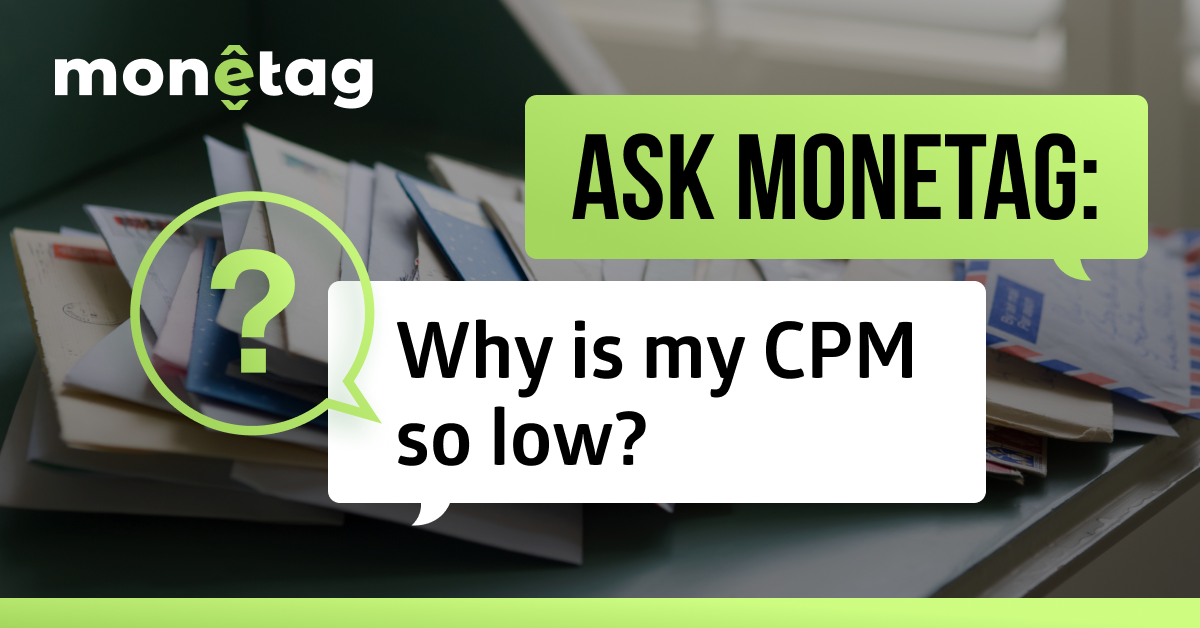
This post is also available in:
Pt
Es
Are you losing sleep at night worrying about how to increase your CPM?
Do you spend countless hours improving your website, polishing the content, and exploring new methods of bringing in visitors?
If that sounds like you, know that you’re not alone.
Many publishers invest a lot of time into improving their metrics but don’t see a good ROI in their traffic monetization results.
At first glance, nothing seems to be wrong with their sites, but their CPM is below sea level.
We get the frustration!
Luckily, today we are joined by our in-house monetization expert, Head of Traffic Acquisition at Monetag. She’ll shed light on the issues associated with CPM rates, explain how to overcome common challenges, and how to transform your website into a monetization powerhouse.
Let’s jump right into it!
Why is my CPM so low?
Our expert says:
I want to start by clarifying the way the advertising network works. Most probably, you know that there are two major participants in the advertising process: a publisher and an advertiser.
A publisher is getting paid by the advertiser who promotes his offer or a product on the publisher’s website. So far, so good, right?
And then we come to the “grey area” – the PRICE for publisher’s traffic. How on earth does an ad network decide how much a certain ad placement costs?
Actually, that’s a very good question.
We (the monetization platform) are not determining the price because we are not the ones who pay!
Let me give you an example. See ad network as a marketplace. Some goods are more popular and expensive than others; some are not popular at all, and no one buys them. Then a holiday season comes, and the situation changes before our eyes: those not-so-popular goods are getting more expensive because of the demand.
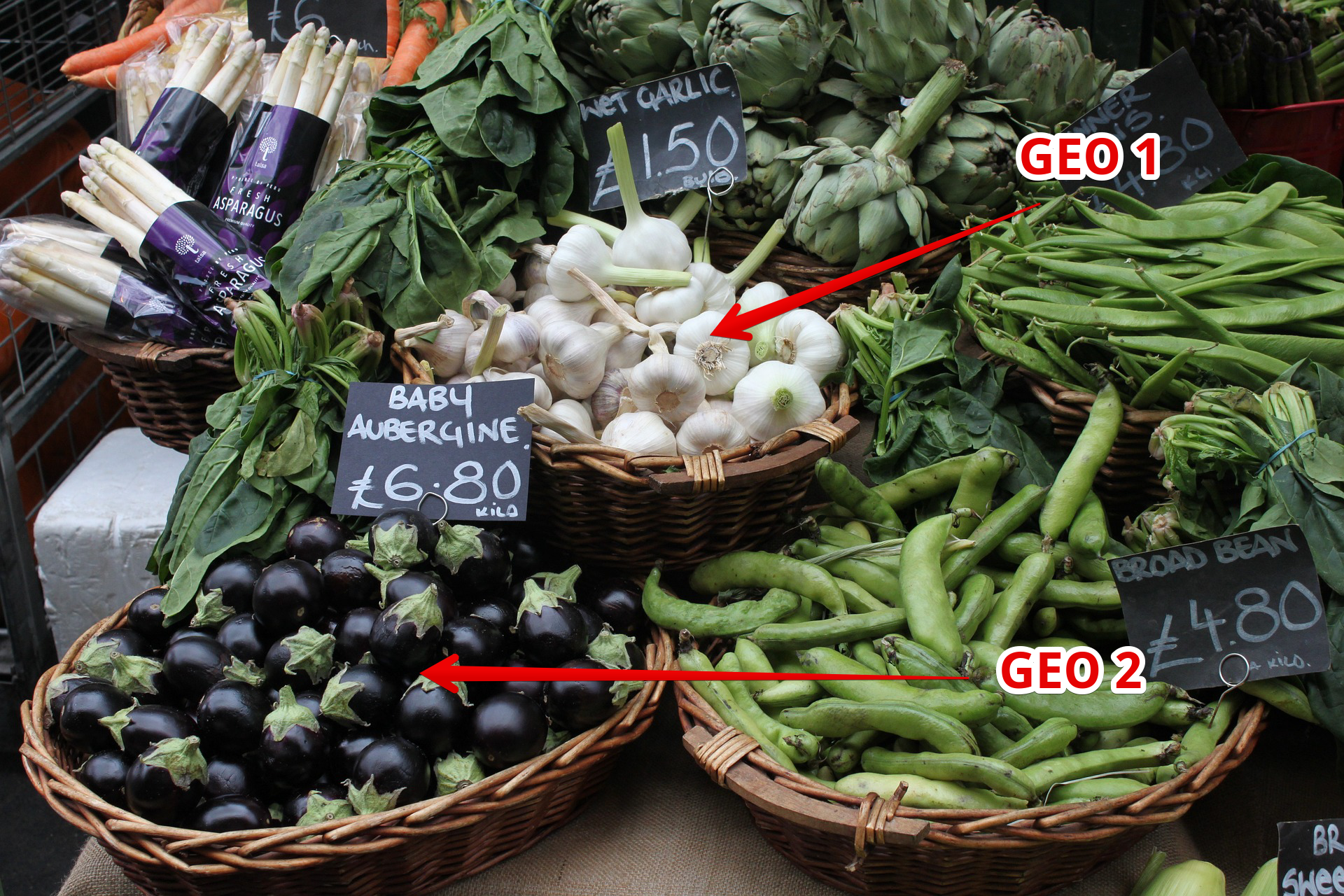
Exactly the same principle applies to advertising. But instead of goods, we have GEOs and other targeting options – advertisers want to show their ads to specific users, and they are buying the ad placements on the websites these users usually visit.
Our publishers are often confused with the difference between the rates advertisers pay for traffic and the rates they get as a PUBLISHER.
But publishers usually forget that advertisers set multiple requirements for their campaigns; e.g., they limit the GEOs, define platforms, browsers, carriers, frequency capping, and set expectations in terms of conversion rates – and many, many more.
Our aim as a monetization platform is to fill 100% of publishers’ traffic, rotating those advertisers and matching their requirements with available traffic.
The final goal is to sell the publisher’s traffic to the advertisers who pay the highest bids, according to the quality of traffic.
Asking about CPM rates, publishers usually expect a plain answer, but the thing is, there’s almost never a single reason that causes the rate to fall or be low initially.
We do our best to help “squeeze” the maximum out of the traffic so our publishers can get more money. Yet I can name at least 11 reasons why your traffic is not performing its best. Let’s go through them one by one:
1. Technical issues
One of the top reasons the CPM rate is sliding down is proxy traffic. It means your website is getting many visitors who are browsing privately: no real IP address of the user or real geolocation can be detected.
Usually, proxy traffic is made up of users who are connected to the Internet through open proxy servers.
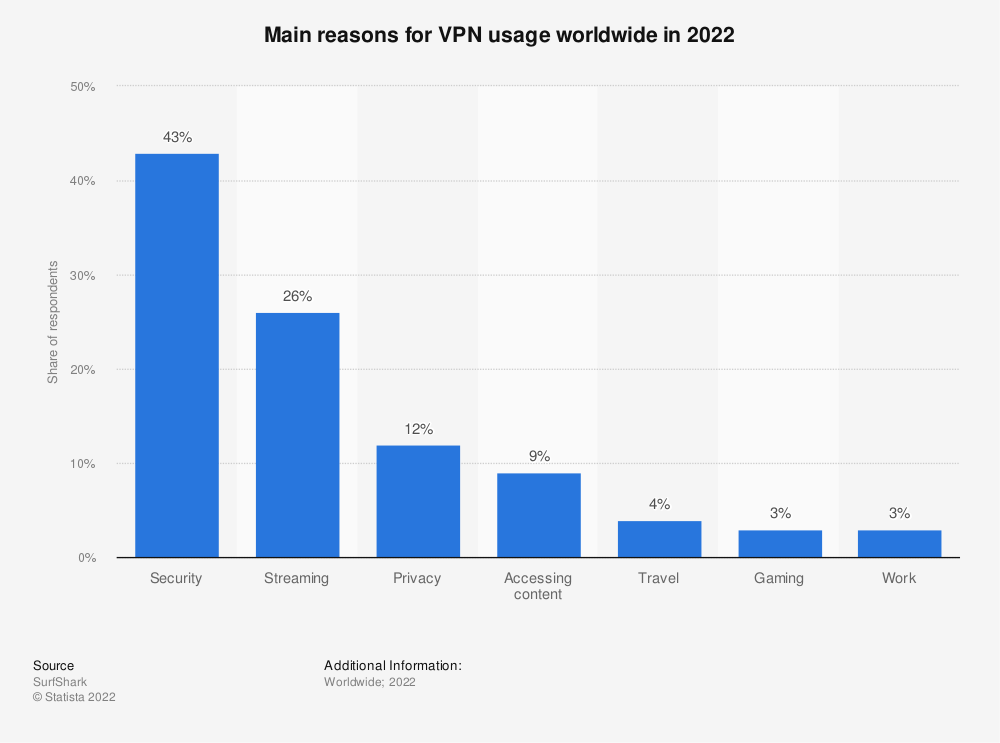
So, why is proxy traffic cheaper?
Advertisers don’t like buying proxy traffic and paying high rates for it since we can’t determine whether a user is unique or not, as well we can’t identify the user’s actual location.
Let’s be honest; no website getting high organic traffic would have a high percentage of proxy users. Most likely, we are talking about “fake” traffic that we are not interested in selling to advertisers.
2. Audience characteristics
This part is closely tied to statistics: over time, we have determined what users are bringing the most value to advertisers. These users usually share certain characteristics like GEO, OS type, the device they are using, browser version, etc.
There are distinct patterns; for example, mobile traffic is more expensive than desktop traffic, and US traffic costs more than Indian traffic.
In other words, if your website is driving Tier-3 desktop traffic, you shouldn’t expect the same rates as a US website would get with lots of mobile traffic.
Interested in learning more? Study your Google Analytics report closely to find out more about your website audience.
Important! Don’t check the average CPM rate, switch to 30 days mode and analyze the stats by Country and OS Type.
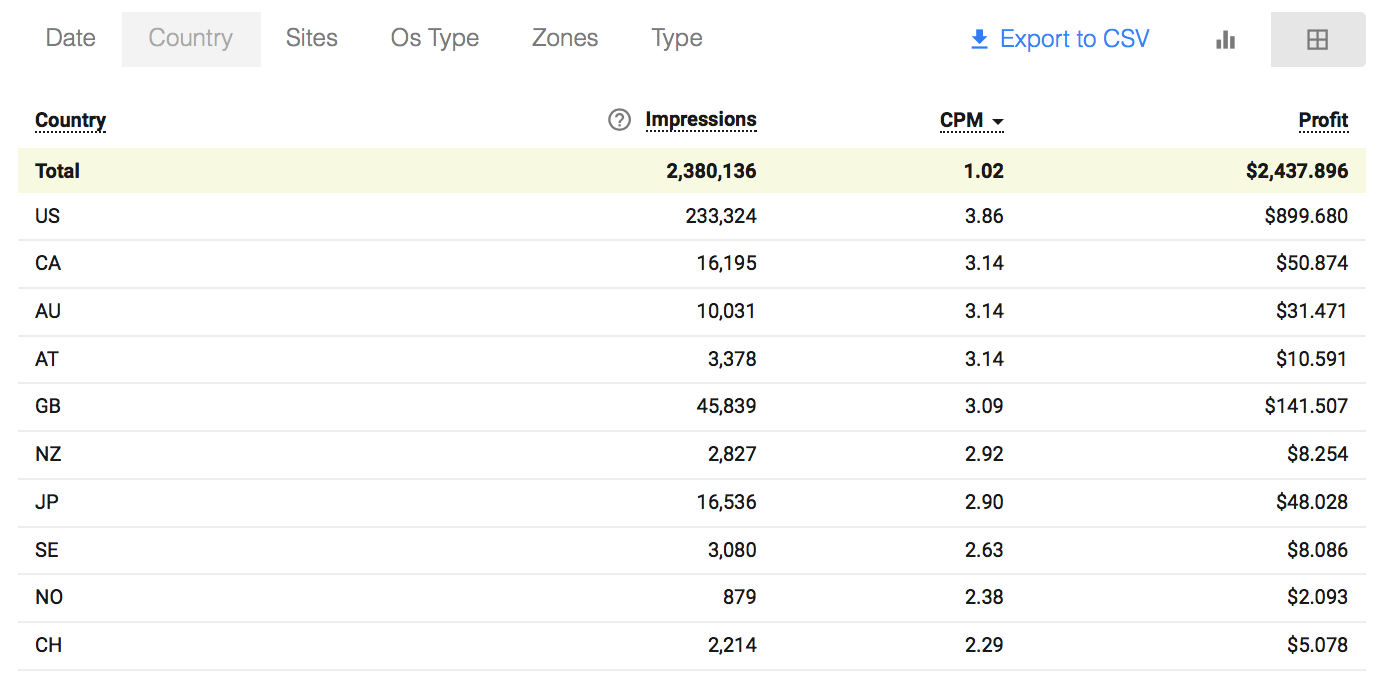
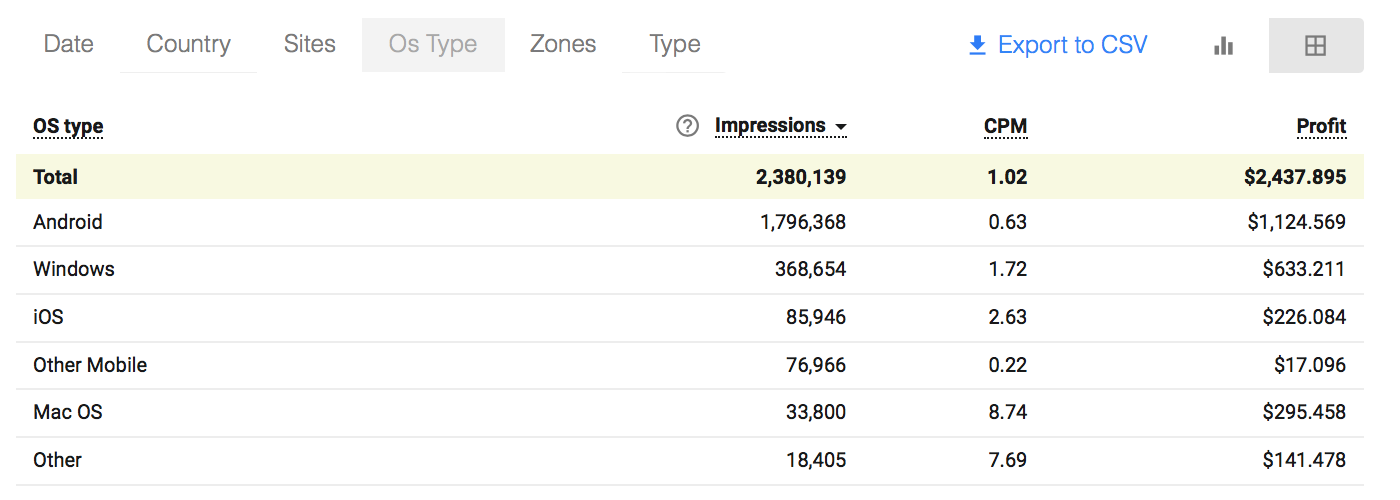
3. Ad formats & website types
Sometimes publishers choose ad formats that are just not right for their website type. The wrong ad format can also decrease your CPM rate!
So how do you choose thre right ad format?
- Media converters, sports websites, or sites with various content on-demand would benefit most from Popunder and Push Notifications ads.
- Entertainment websites, blogs, and news outlets should opt for Vignette, Push Notifications, or Interstitials.
The rule of thumb here: if there are no or very few user-initiated actions on your websites (clicks, hover-overs), it’s better to focus on the following range – Vignette, Push Notifications, Interstitials.
Any website can see real results from Vignette ads because publishers are able to monetize each visit.
A universal solution that will work for any website, combined with any ad format, is the Push Notifications ad format.
4. Seasonality
Your CPM rate depends on the season – that’s how the market works.
For example, it’s normal for rates to drop in summer.
During the summer, demand for most goods and services falls, and so do advertisers’ budgets. Some businesses are just cutting their expenses in the summer, and start investing in ads again in September.
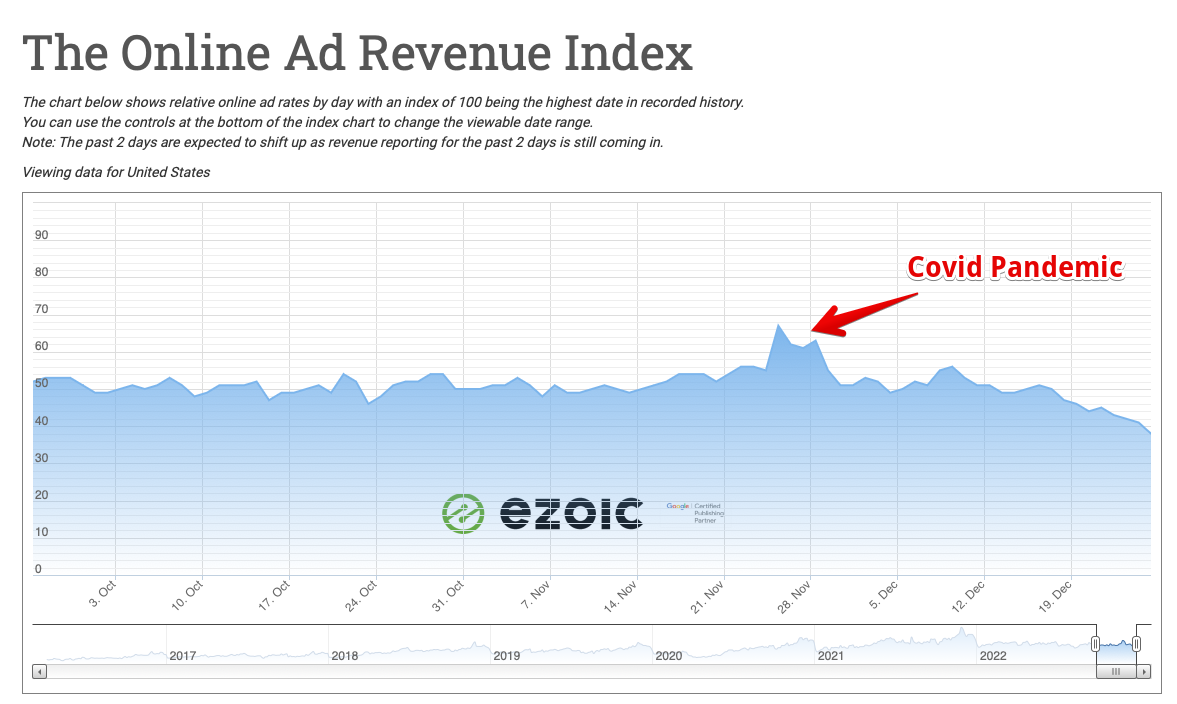
Seasonality has a positive side as well. CPM rates usually go higher during holidays and sporting events.
Better yet, based on our own data, CPM rates are getting even higher during November, December, and March.
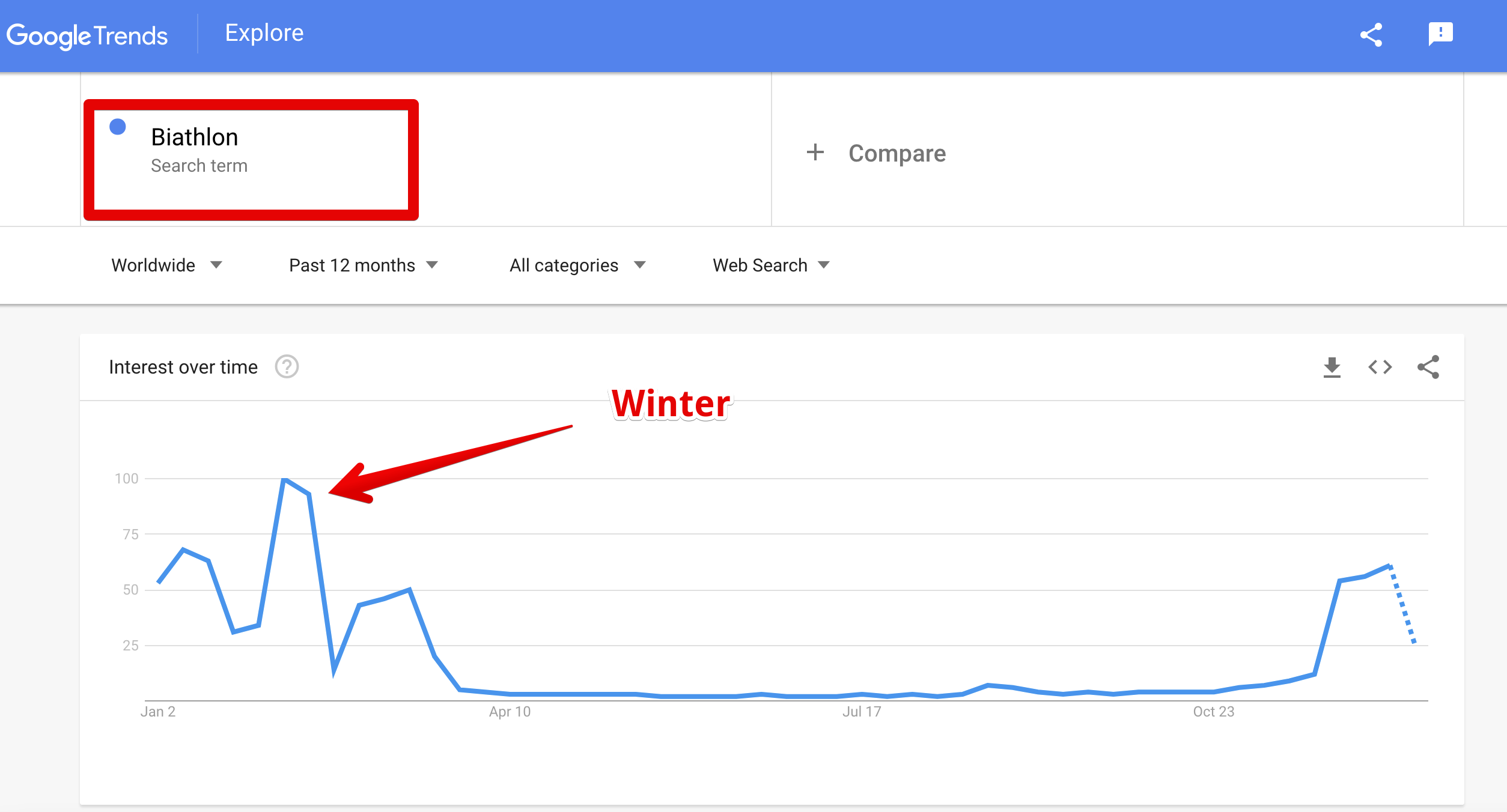

5. Ad density per page (AKA: having too many ads)
A lot of publishers think that if they place more ads, they’ll turn a bigger profit.
Big mistake!
Overloading pages with ads won’t increase your revenue, but most likely will have the opposite effect.
If a website visitor sees 10 popunders at once, an interstitial, a push notification opt-in request and a vignette – this person would hardly click any of these ads.
It’s just an overwhelming experience to see ads springing up like mushrooms after the rain.
And if no one clicks, your CPM will go all the way down.
What do we recommend?
- Reduce the number of ads; it’s not just intrusive, it might slow down the page load speed.
- Test various ad format combinations, so your visitors can find the ads, they are genuinely interested in. The combinations we suggest are Popunder + Push Notifications, Interstitials + Push Notifications, and Vignette banners + Push Notifications.
6. Bad traffic sources
If your visitors aren’t clicking, registering, or purchasing, and they are ignoring your ads, should you be concerned?
In short, yes, you should!
Advertisers are not interested in users just seeing ads; they want them to take certain actions, because “seeing” doesn’t bring them money. And it doesn’t bring money to you either.
So, why would users ignore your ads?
Very often, publishers are trying to increase the traffic to their website and therefore, increase the monetization potential of their website.
To reach this goal, they are purchasing traffic from non-reliable ad networks or services promising 500k visitors for $5, but all they get are bots. Bots don’t click on the ads and can be easily identified by traffic monitoring systems.
Think about it, driving bot traffic and random users to your site vs. quality search traffic triggers a huge difference in user behavior, and the poor-quality traffic results in low CPM rates.
How can I check my traffic quality?
You can get an idea of how quality your traffic is by checking the bounce rate.
Even though the bounce rate varies from industry to industry and is affected by the type of content you have on your website, it’s a good start when it comes to assessing the quality of the traffic.
See the Bounce rate value in your Google Analytics:

7. Ad placement
If you see that your CPM is falling, check where on the website your ads are and how often users see these ads.
For example, if you set your push notifications opt-in request to appear after the fourth page your user clicks while your users commonly visit two pages during one session, you can’t expect sky-high profits.
Or if popunder ads frequency is higher than recommended, and the ad appears after each click on the page – you are just killing the advertiser’s landing page performance.
8. CPM rate vs. real profits
You’ve noticed that your CPM is low. But it doesn’t necessarily mean that your income would be low as well.
Publishers tend to focus on the CPM value, overlooking the actual money they are making.
That happens pretty often with publishers, who have experience working with ad networks that “show” next to impossible CPM rates, but “COUNT” fewer impressions for different reasons (for example, saying that they are “accepting” traffic only from certain GEOs and, obviously, not paying for the rest of traffic).
The real reason why these ad networks deceive publishers is that they don’t have enough advertisers to fill publishers’ traffic fully. Let’s do the math.
How it should work:
- The publisher provides 100k impressions per month
- The CPM is $0.5
- The revenue is $50
Compare to what some networks do:
- The publisher provides 100k impressions per month
- The CPM is $2
- Ad network says that according to their data, only 20k impressions were eligible
- The revenue is $40
This is what we see way too often. And that’s how publishers get low profits with “high” CPM!
In my experience, it’s always better to check your account statement, the money you’ve earned, rather than looking only at CPM value.
Luckily, at Monetag we don’t have issues with the number of advertisers; therefore, publishers have no reason to worry about wasted impressions and get all the money they’ve earned.
9. New vs. Returning visitors
Good news – you have a stable audience of devoted visitors.
Overall, that’s a positive thing—but here’s the catch: your visitors are already familiar with all these ad placements.
They know all too well when to close a popunder ad, they may not notice interstitials.
Here’s what you should do:
- Regularly change the time specifications and location of your popunder ads and interstitials.
- Increase your search traffic. You need to bring in new users who haven’t seen the ads yet. For example, a sports website with a stable audience can have a CPM with a difference 10 times that of a news website.
You can check the number of new and returning visitors in Google Analytics.
Go to “Behavior” – “All pages” and then add the secondary dimension: “Users” – “User Type.”
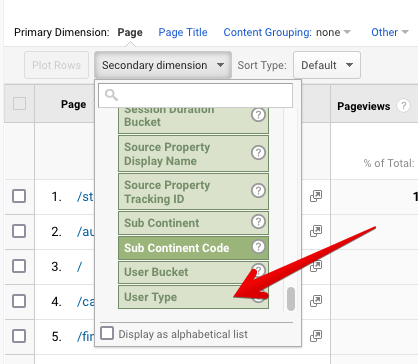
You can also check the stats for individual pages.
10. Visitors using AdBlock
If you are using popunders or push notifications ad formats with anti-AdBlock codes, the average CPM might be lower than you were expecting.
You should check the CPM rates separately on zones with anti-AdBlock and without anti-AdBlock.
It’s normal that CPM rates on anti-AdBlock zones are lower, yet this solution allows you to monetize 100% of your traffic and get additional income.
11. Ads & quality
We are improving our quality guidelines for the ads allowed for promotion. It means that you won’t see misleading or “trashy” ads on your website.
Yet publishers have to understand that ads with explicit content or misleading promises do have higher CTR and CPM rates.
For example, infamous “tech support” ads, promoting third-party tech support services (obviously, illegal and fraudulent) are used to provide extreme CPM rates.
Publishers, who caught those times, still compare “tech support” CPM rates with legal content’s CPM rates.
We principally don’t work with this type of ad, because, in the long term, they usually backfire and destroy the publisher’s reputation.
Have questions you want us to answer? Go ahead and ask them here in the comments section below or send it to content@monetagcom.
